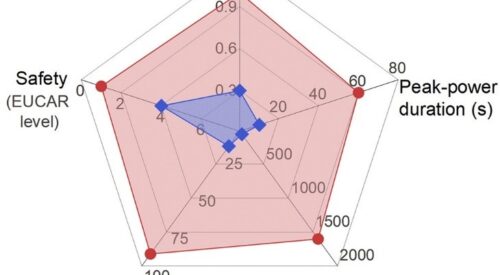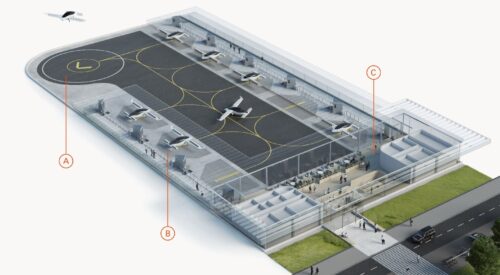Research
Using Redundancy and Risk Awareness to Improve UAM Network Design
In their study, “Risk-aware urban air mobility network design with overflow redundancy,” University of Texas at Austion professors John-Paul Clarke and Ufuk Topcu, along with their postdoctoral fellows, Qinshuang Wei, and Zhenyu Gao, have devised a plan for urban air mobility (UAM) network design that factors in reserve capacity that takes into account alternative landing…
Using AI-driven Drones to Put Out a World on Fire
Once a fire is detected at a specific location, an autonomous drone with a visual camera flies toward the identified geolocation of the node to monitor the fire’s progress. The drone runs our novel fire center detection and tracking algorithm for precise localization and then uses an appropriate countermeasure to extinguish the fire.
Take Charge! Putting the e in eVTOL
A team of British researchers devise a new method to assess battery power capabilities
In their research paper, “Novel battery power capability assessment for improved eVTOL aircraft landing,” researchers Ollie Hatherall, Anup Barai, Mona Faraji Niri, and James Marco from the Energy Innovation Centre, WMG, University of Warwick, Coventry, United Kingdom and Zeyuan Wang from Vertical Aerospace Group Ltd in Bristol, United Kingdom sought to find innovative ways to develop a power testing capability testing framework. They sought…
For UAM to Do Good, First Design Your VTOLs Right
NASA explains what you need to know about designing VTOL aircraft used for the public good
Early planning, beginning in the design phase of aircraft development is key to having a finished project that meets public service operators’ needs.
Urban Planners: Consider This Urban Air Mobility Geospatial Decision-Support Tool to Help Decide Where Advanced Air Mobility Operators and Regulators Should Build Drone Ports
Earlier in 2024, a team of scientists from Aalto University and the Finnish Geospatial Research Institute conducted a study which, they hoped, might bring some clarity and guidance regarding where best to locate drone ports. They limited their study to uncrewed aerial vehicles (UAVs) whose diameter was less than 3 meters. The team, Miloš N….
Power Zone: Vertiports Will Need to Amp Up Their Electric Grids
For advanced air mobility (AAM) to advance rapidly, these facilities will need the ability to provide electricity, perhaps in the form of microgrids, to facilitate rapid, easily accessible charging.






